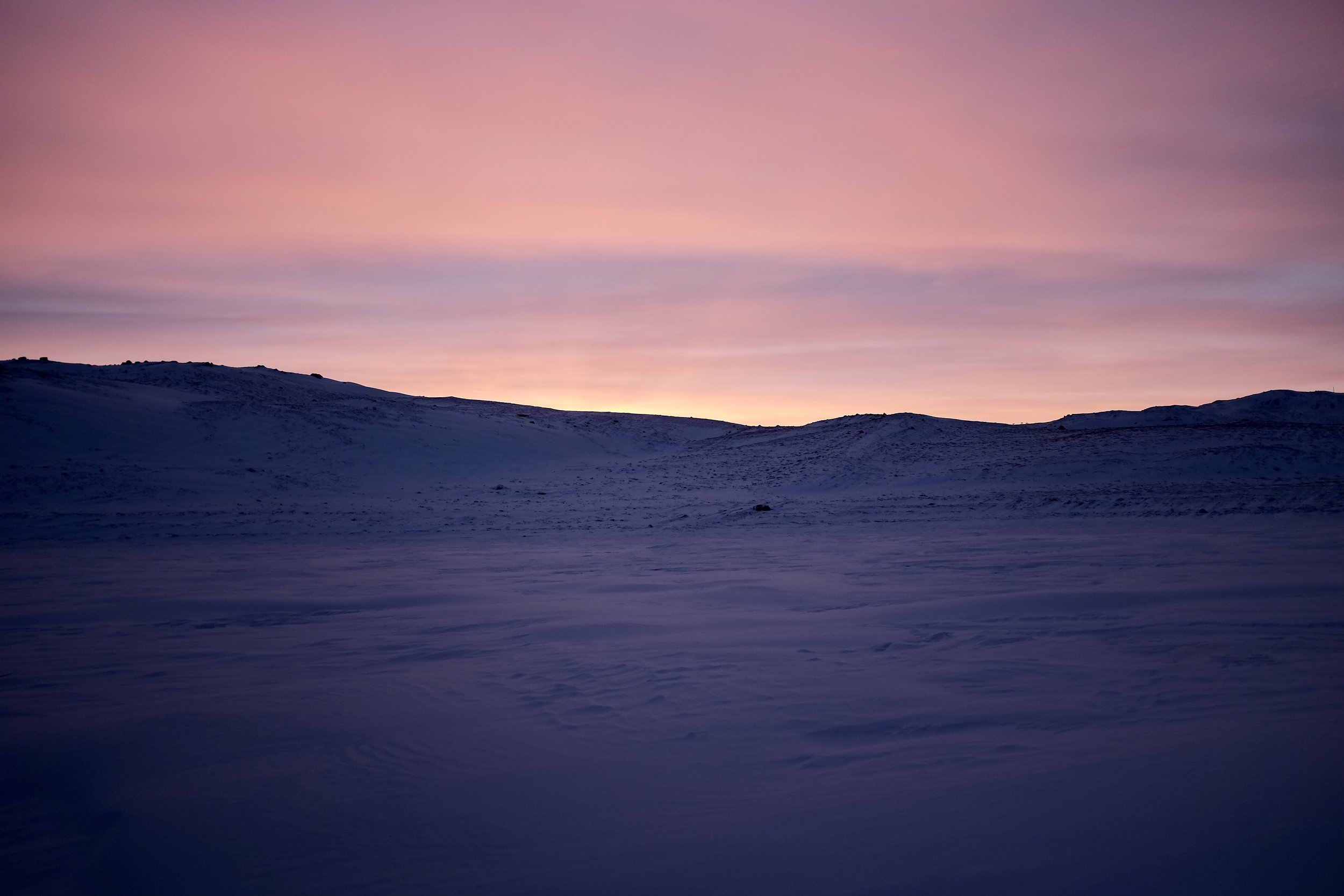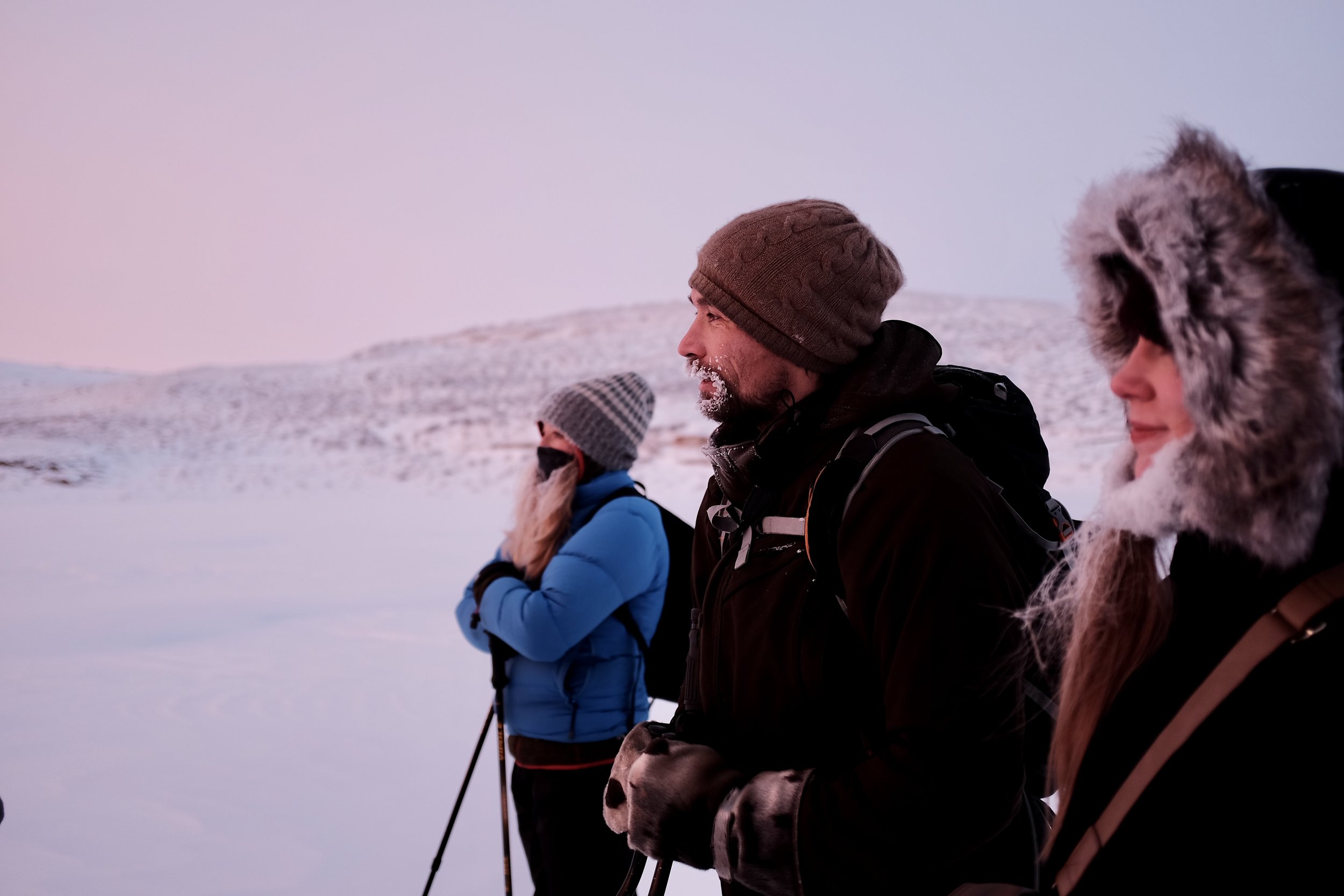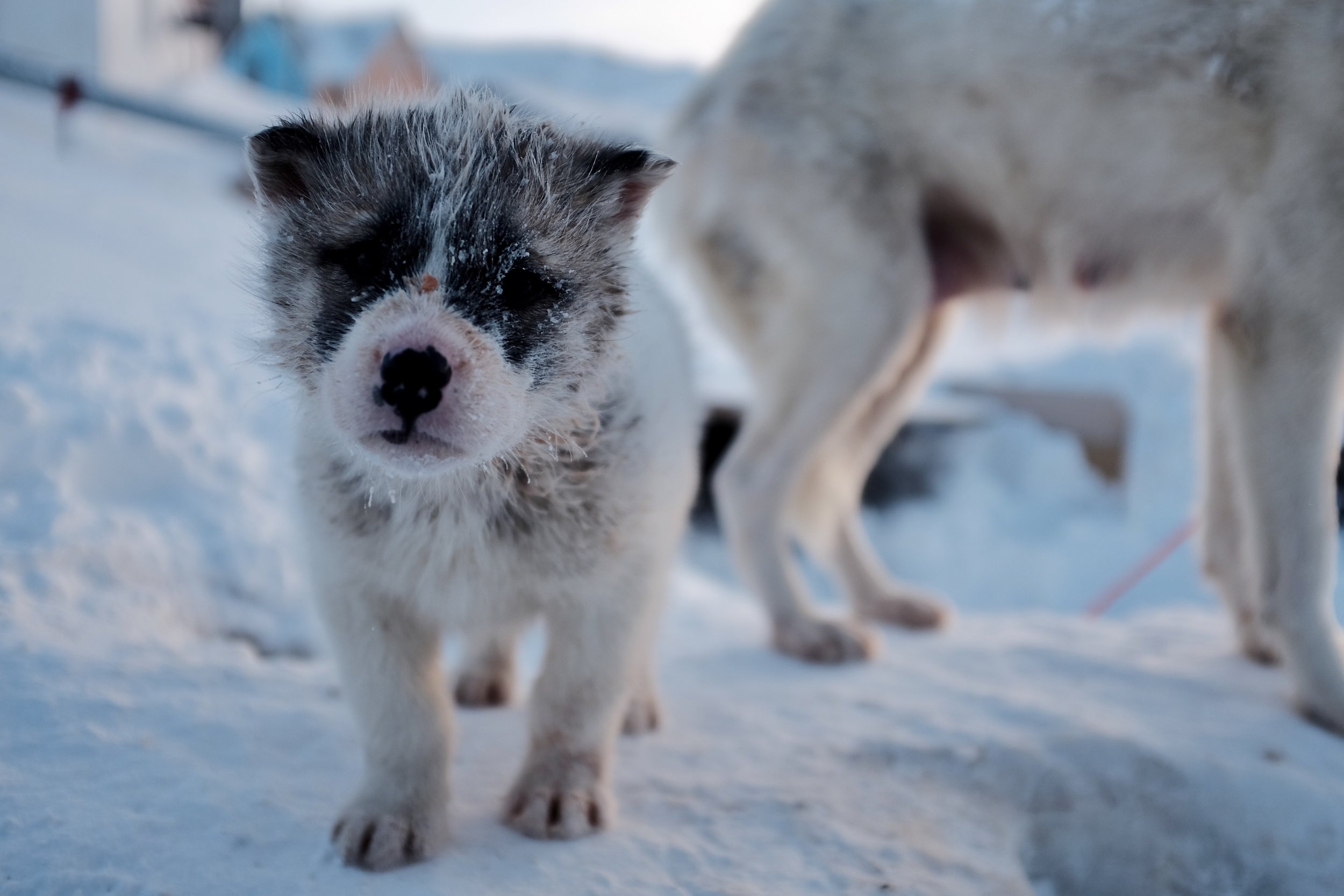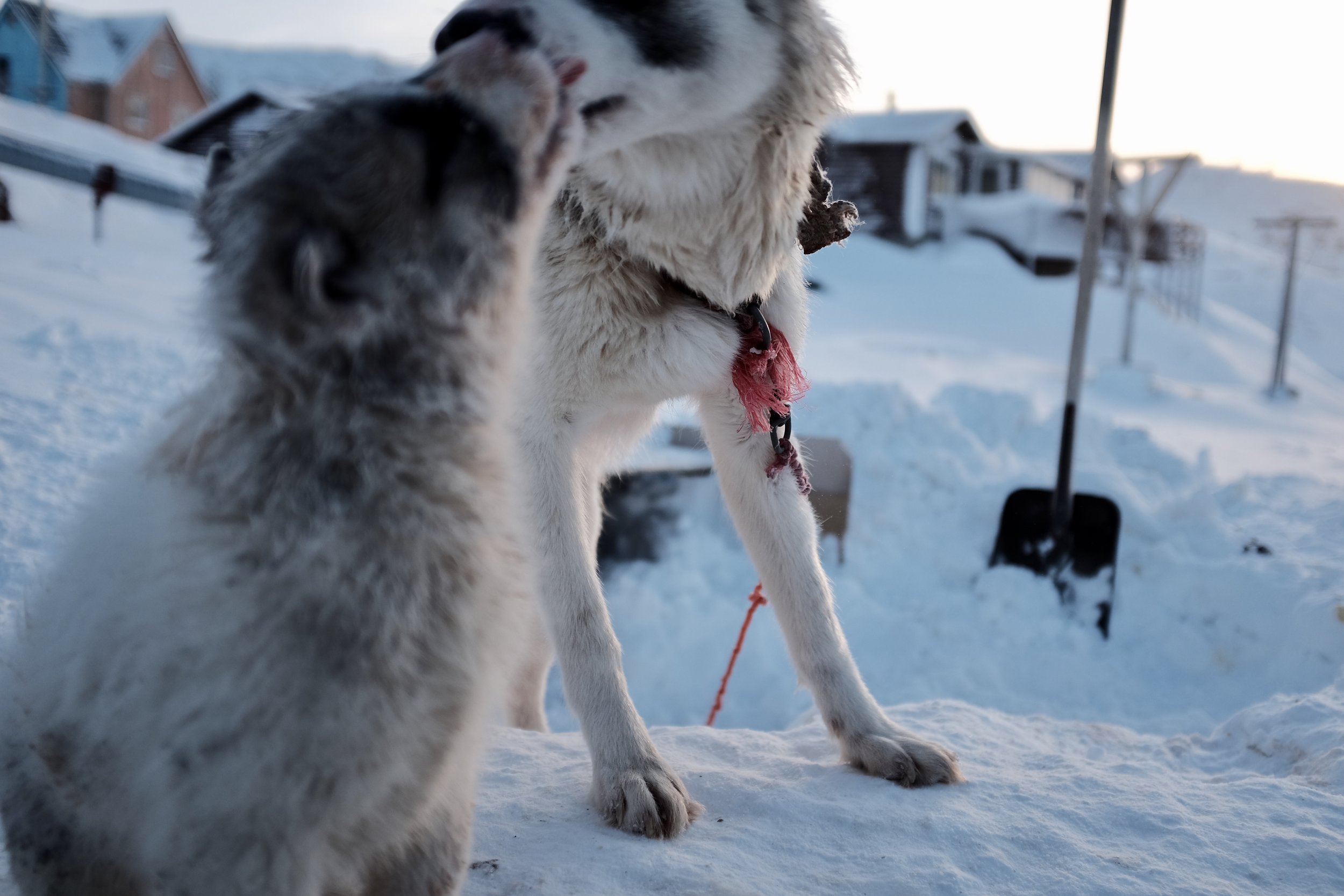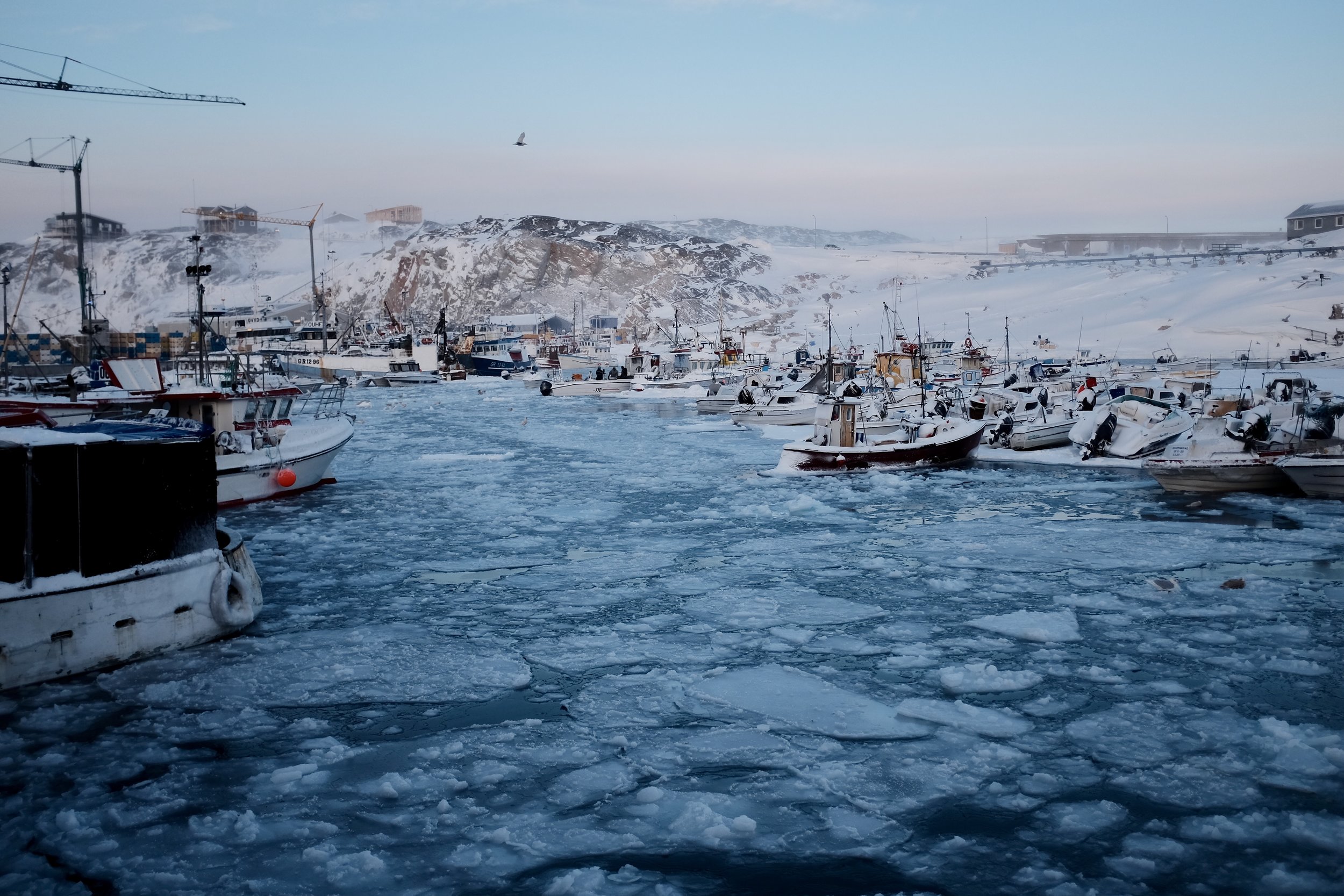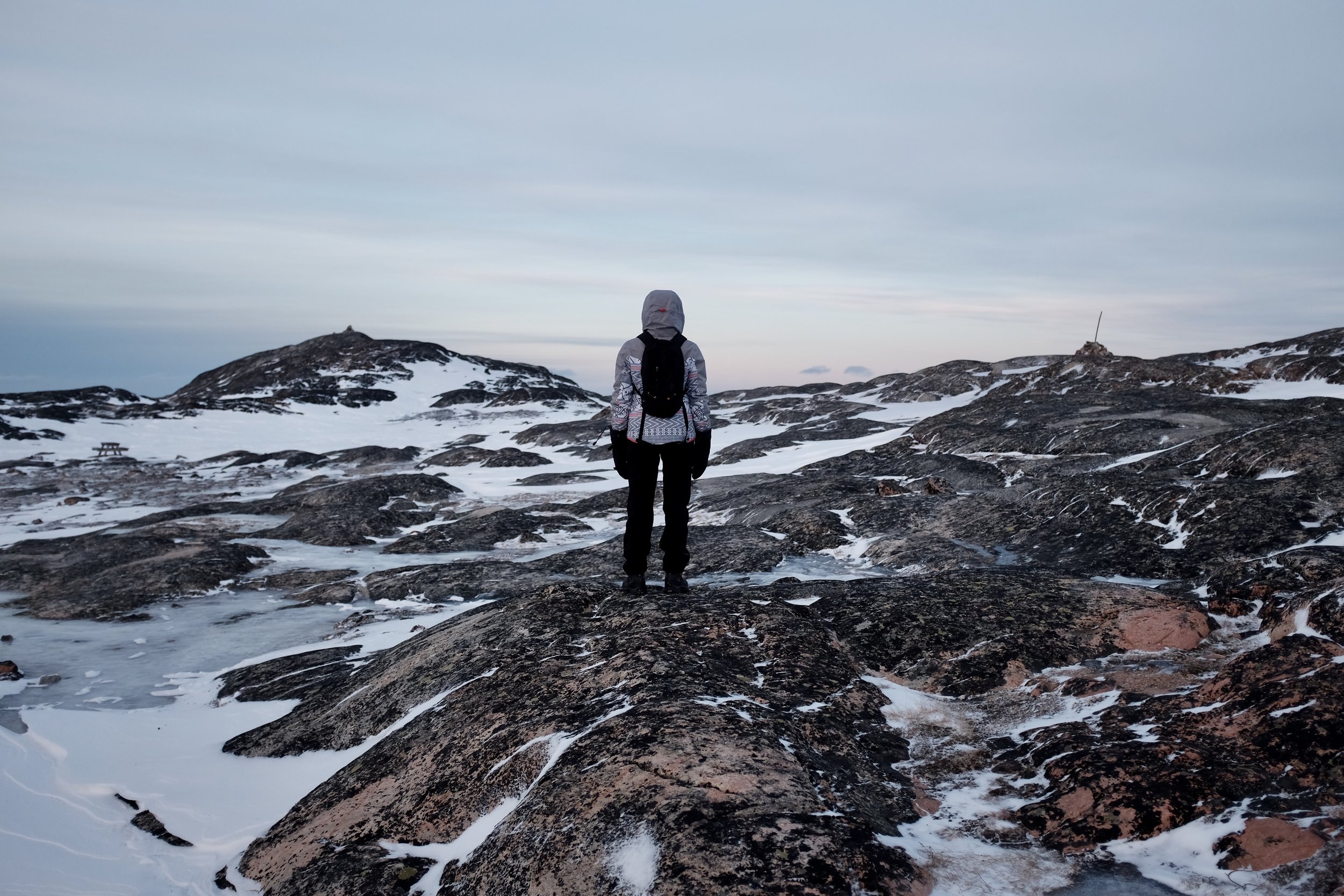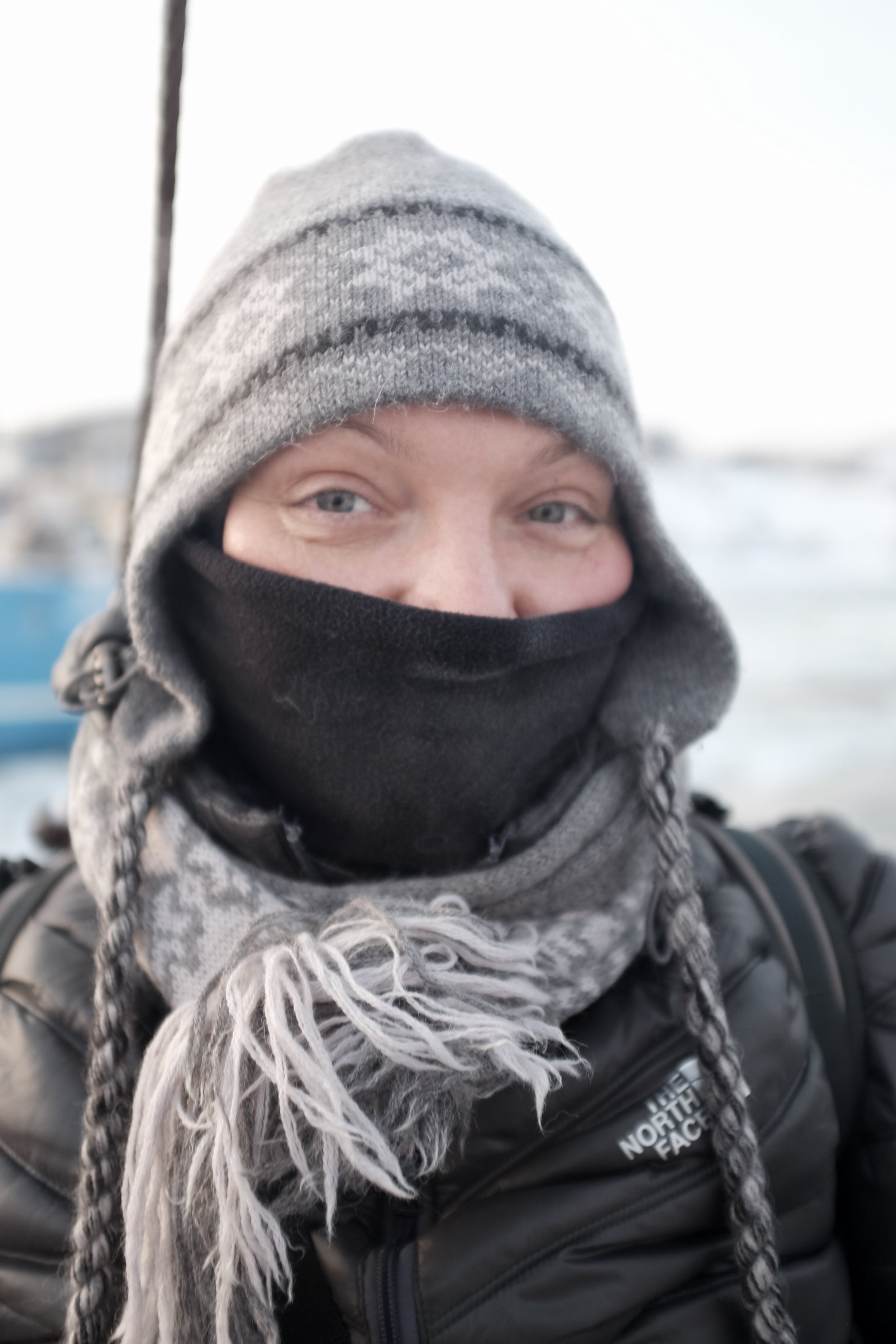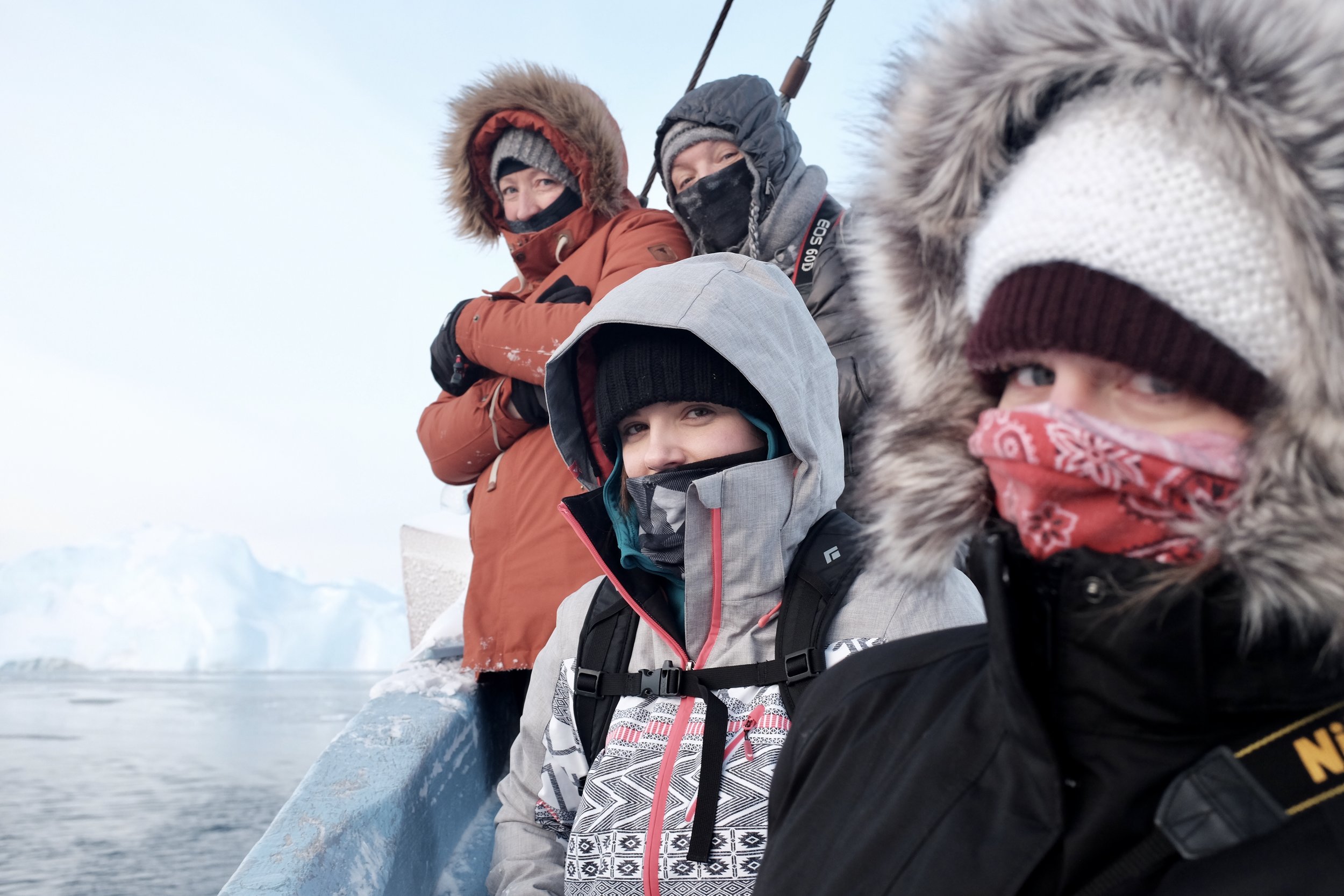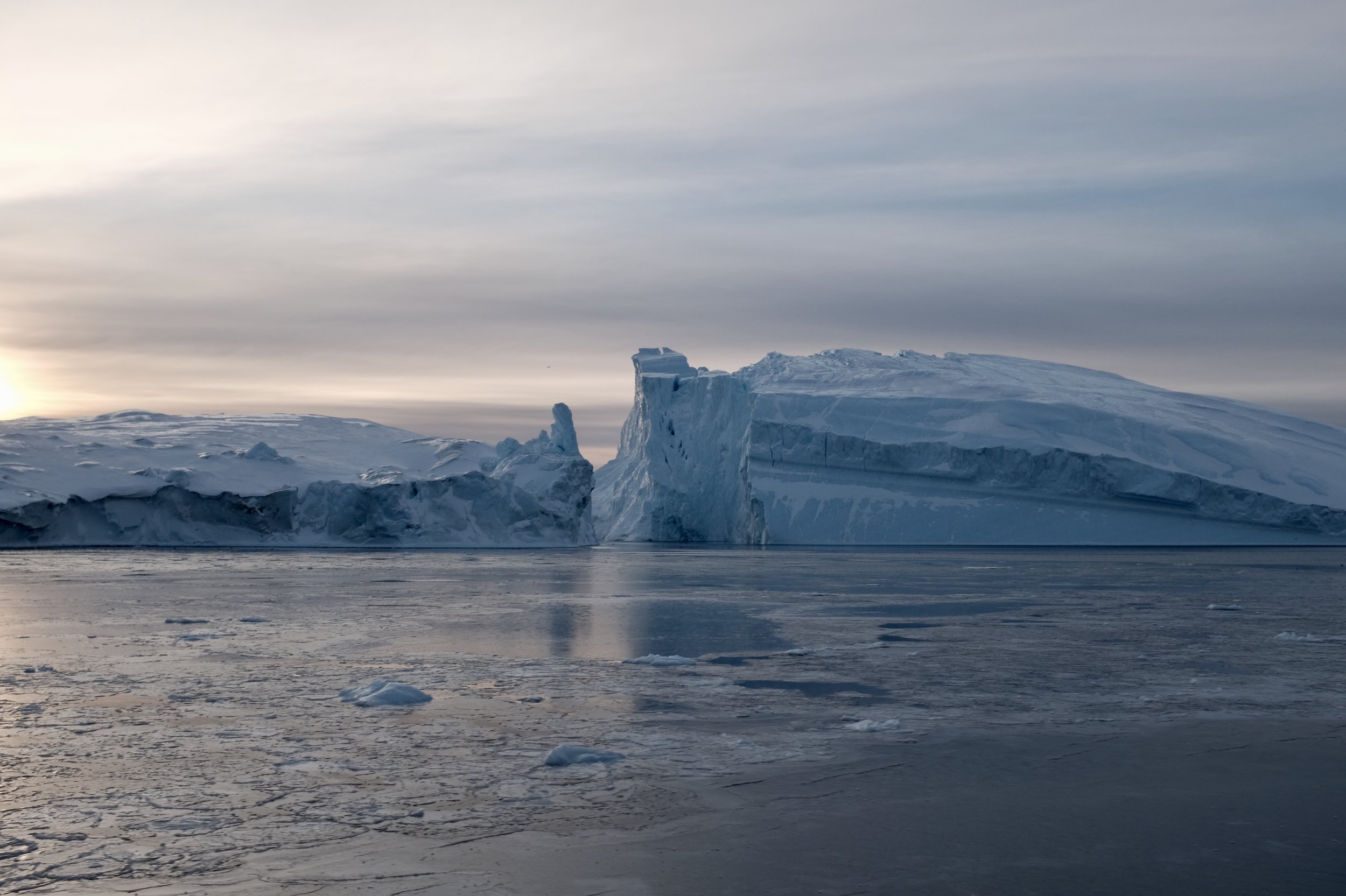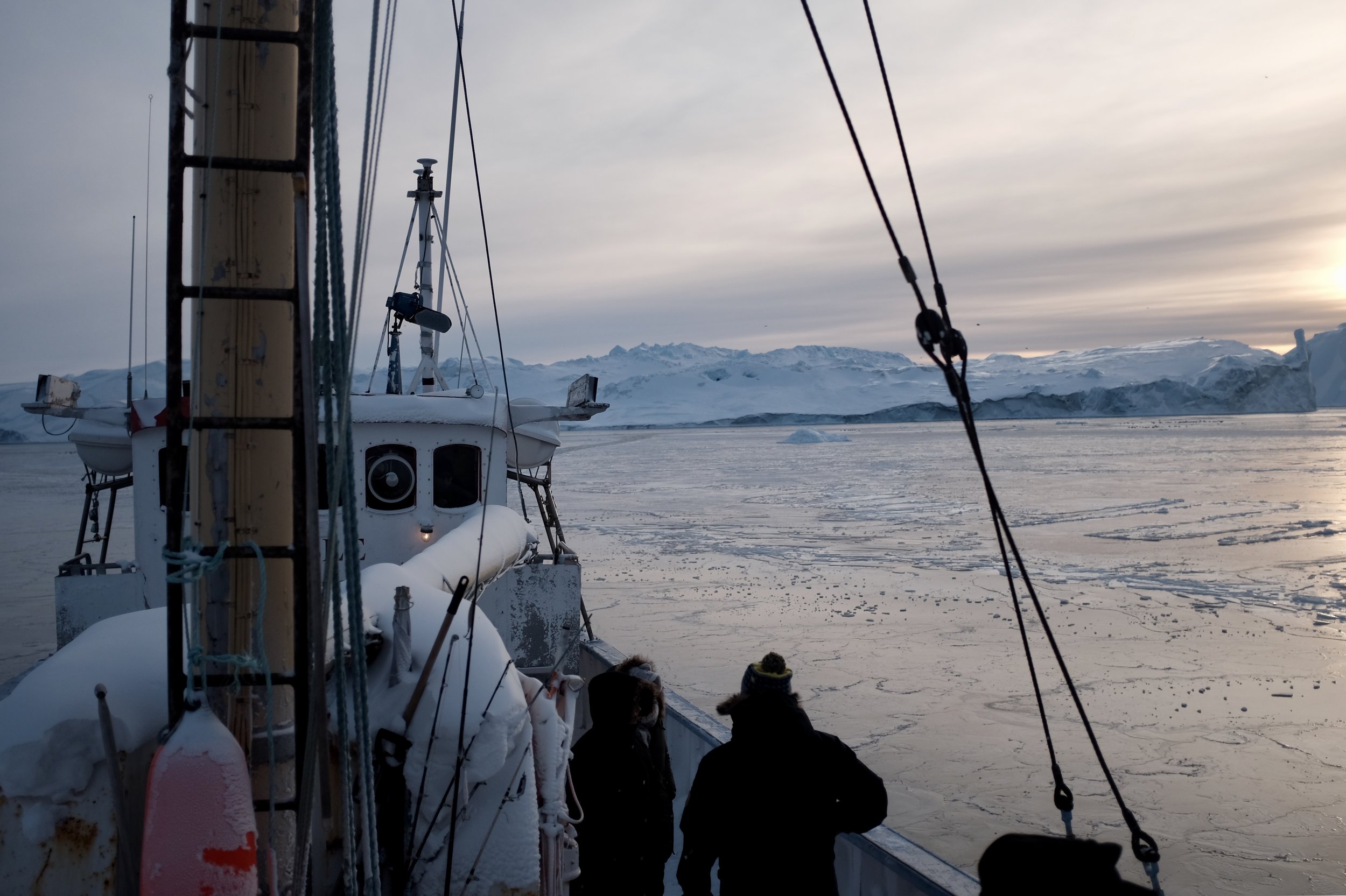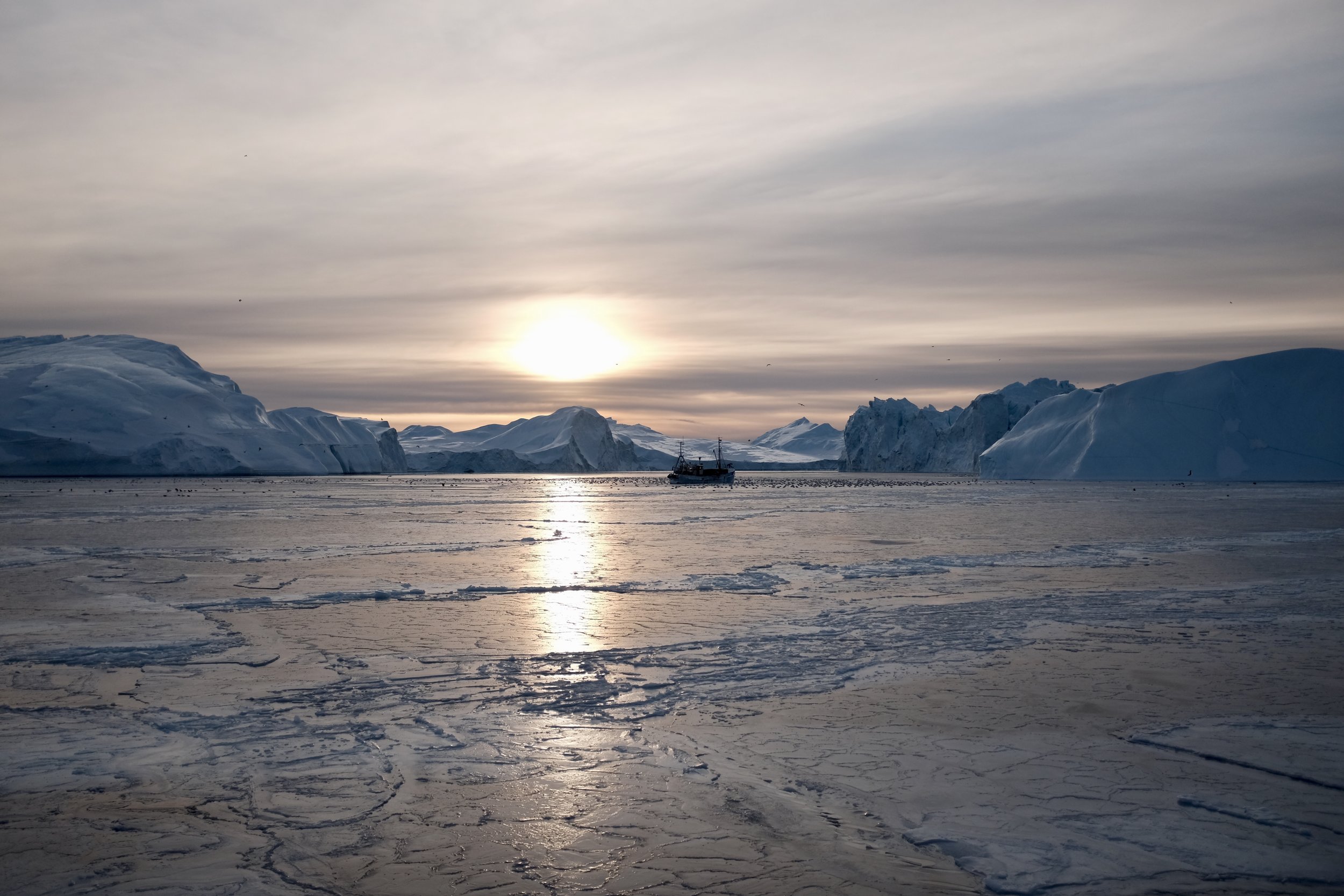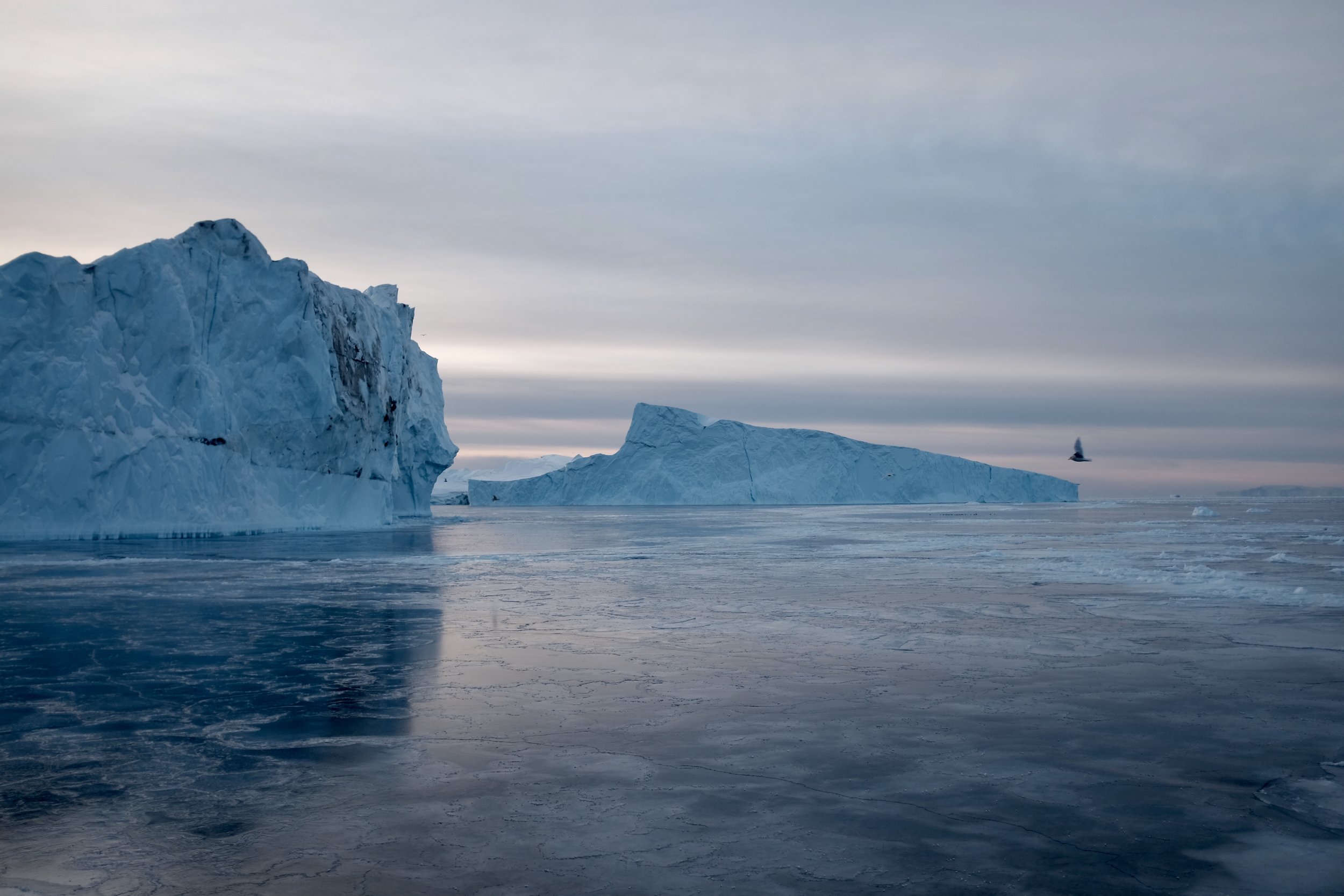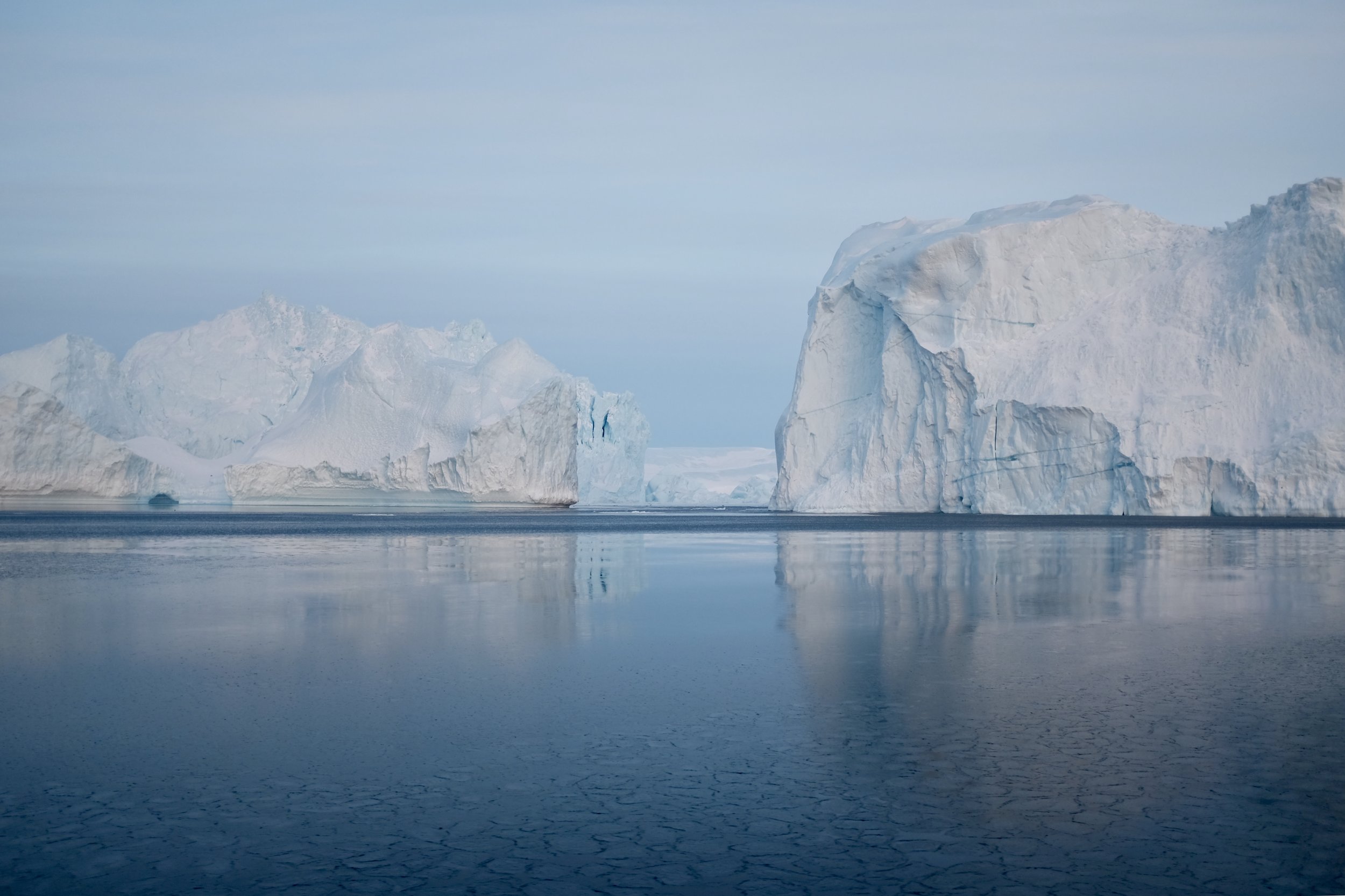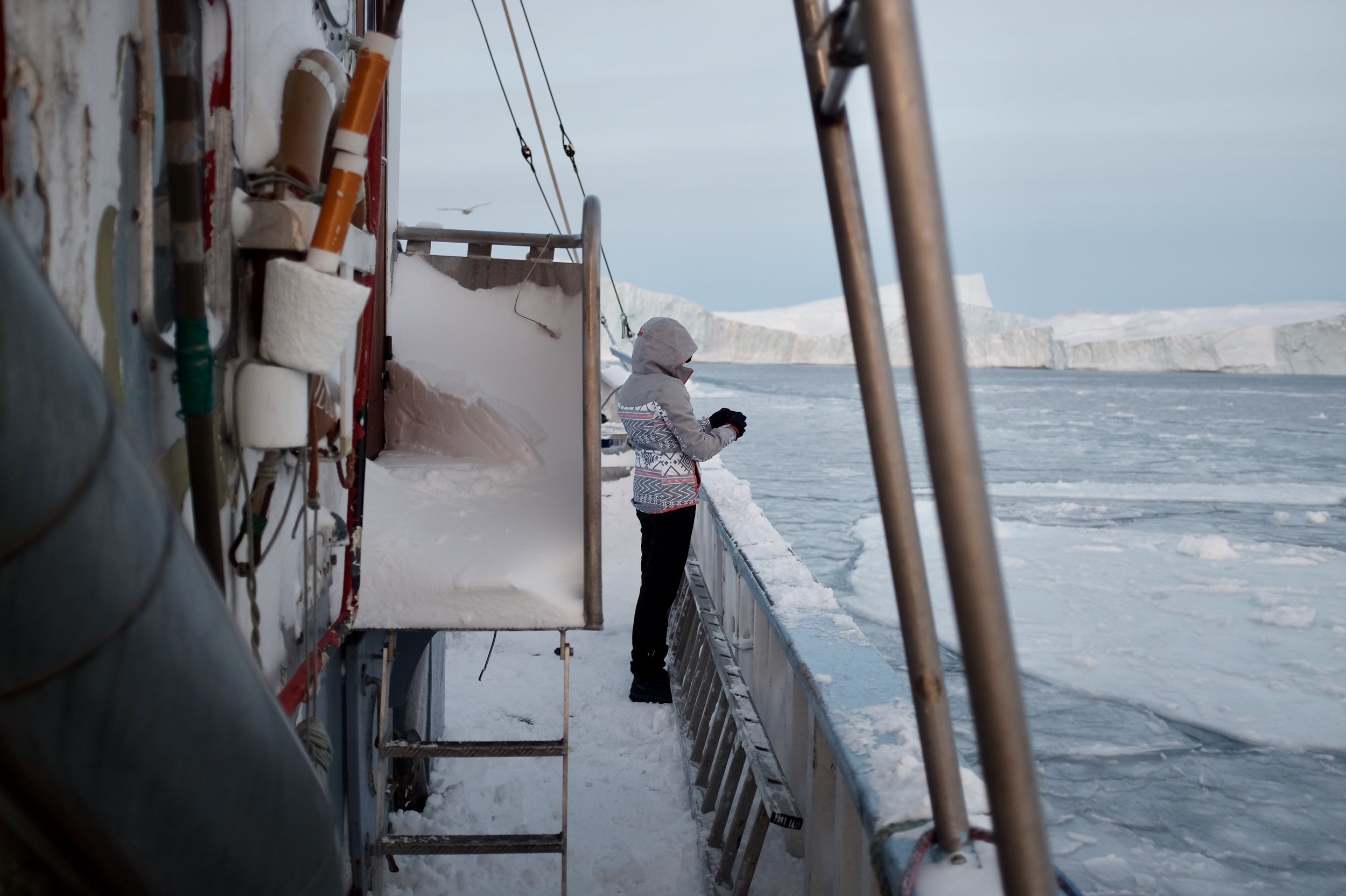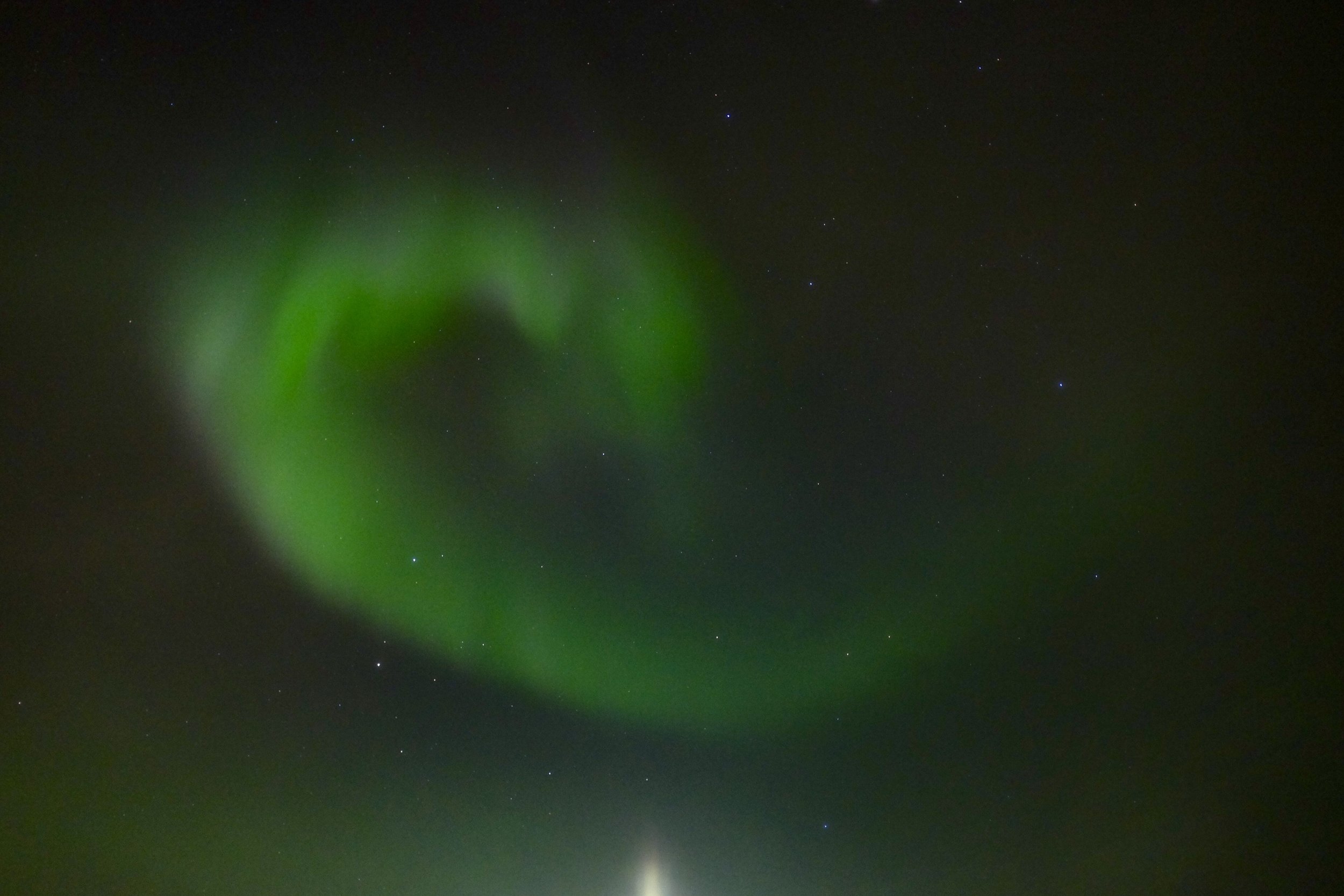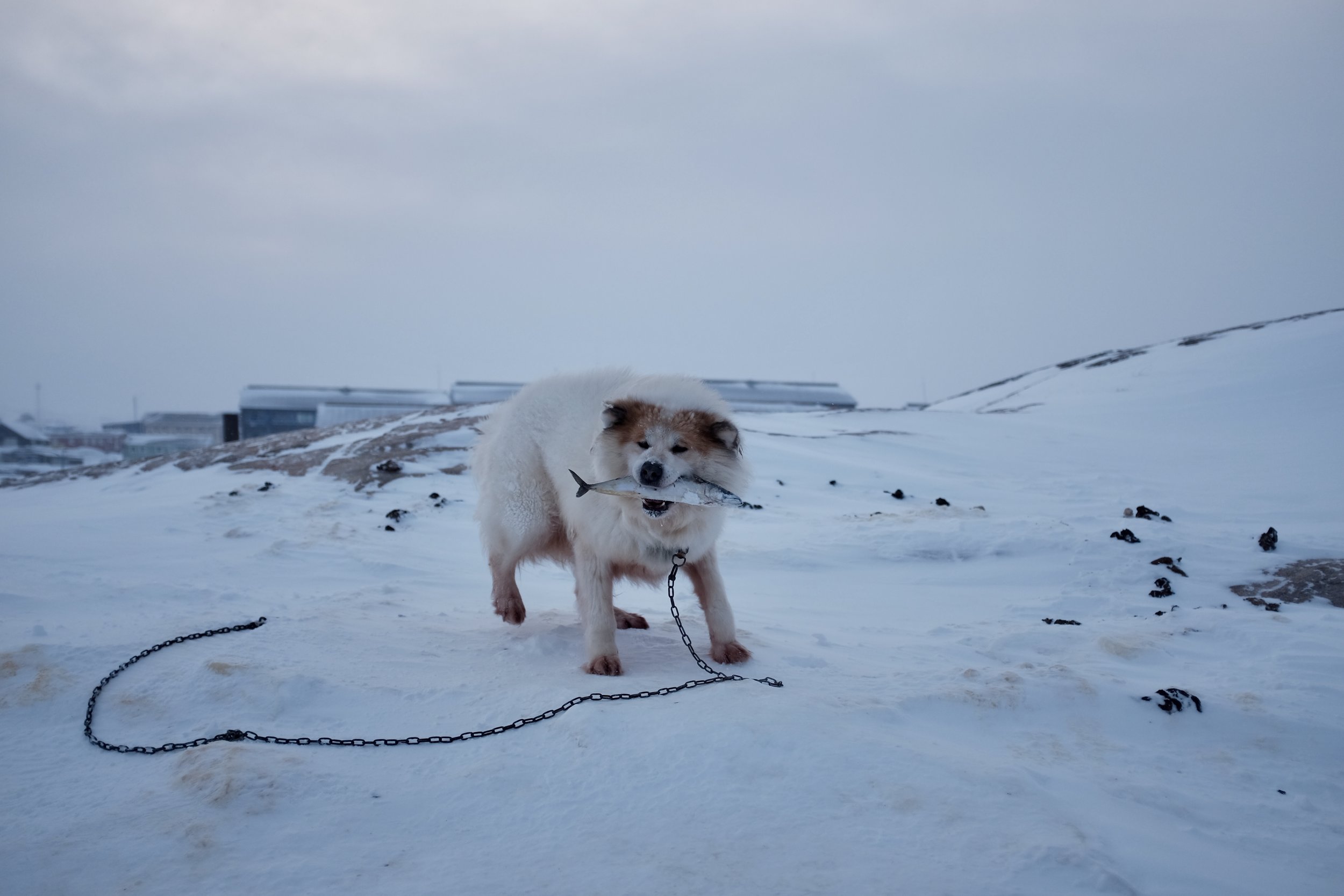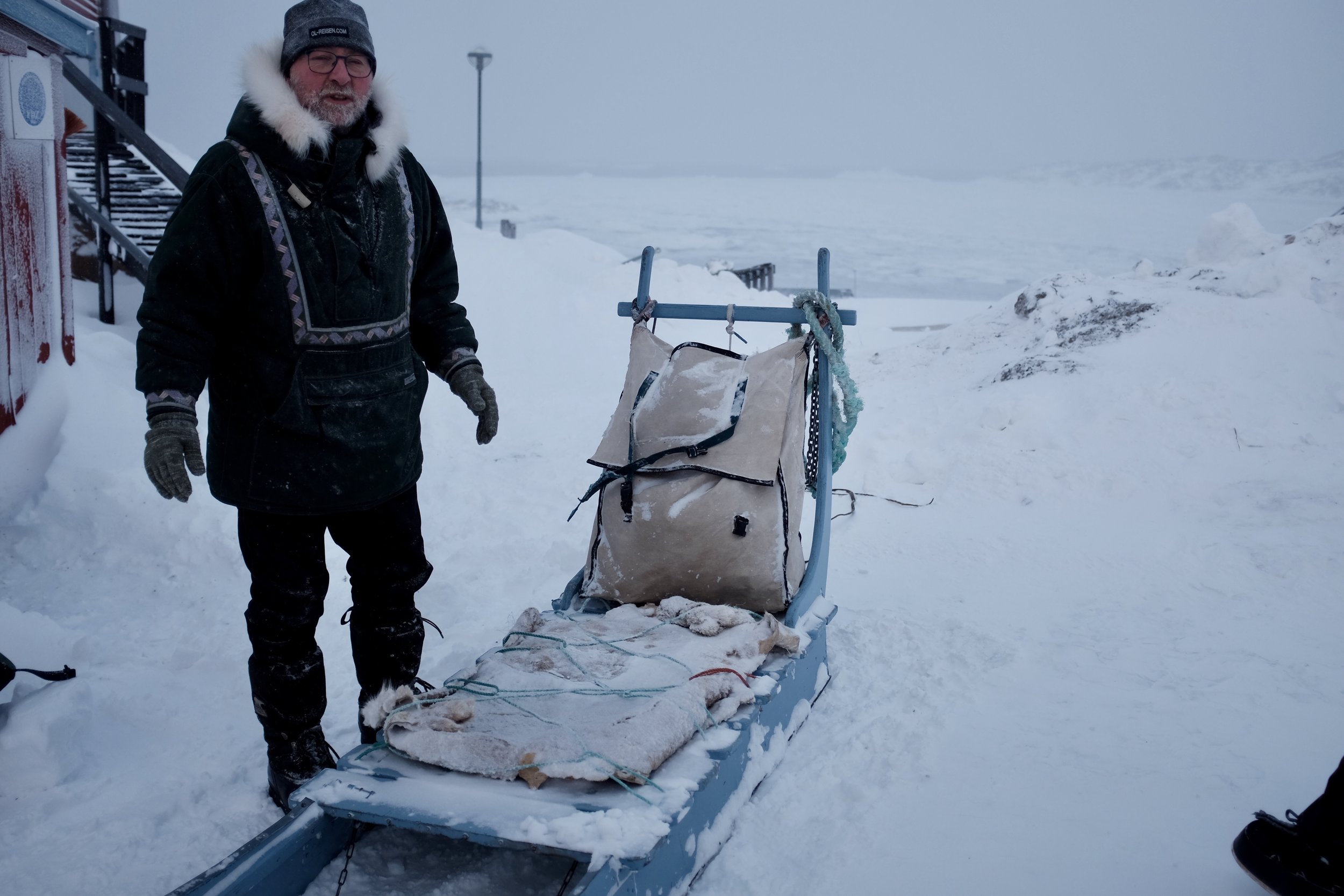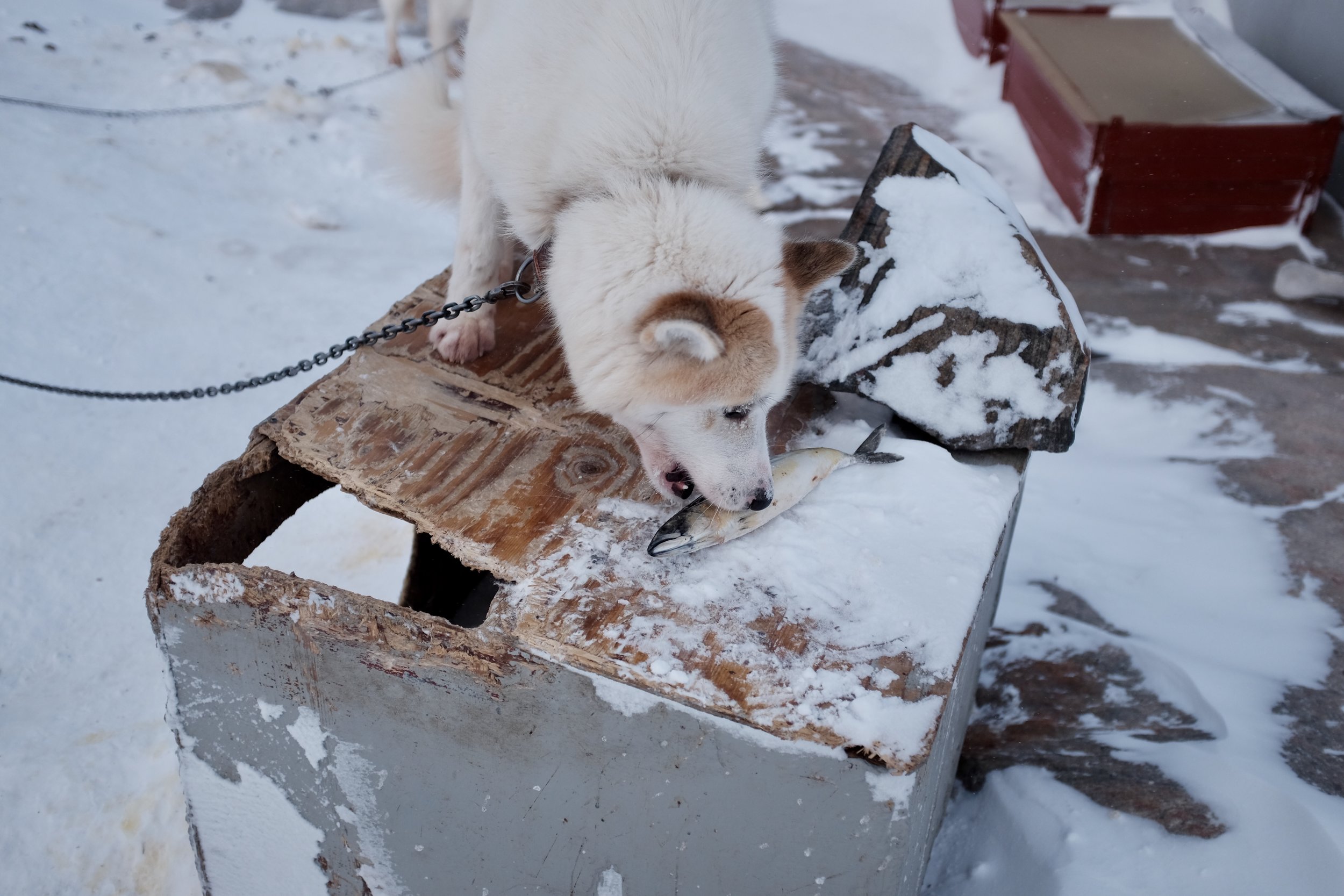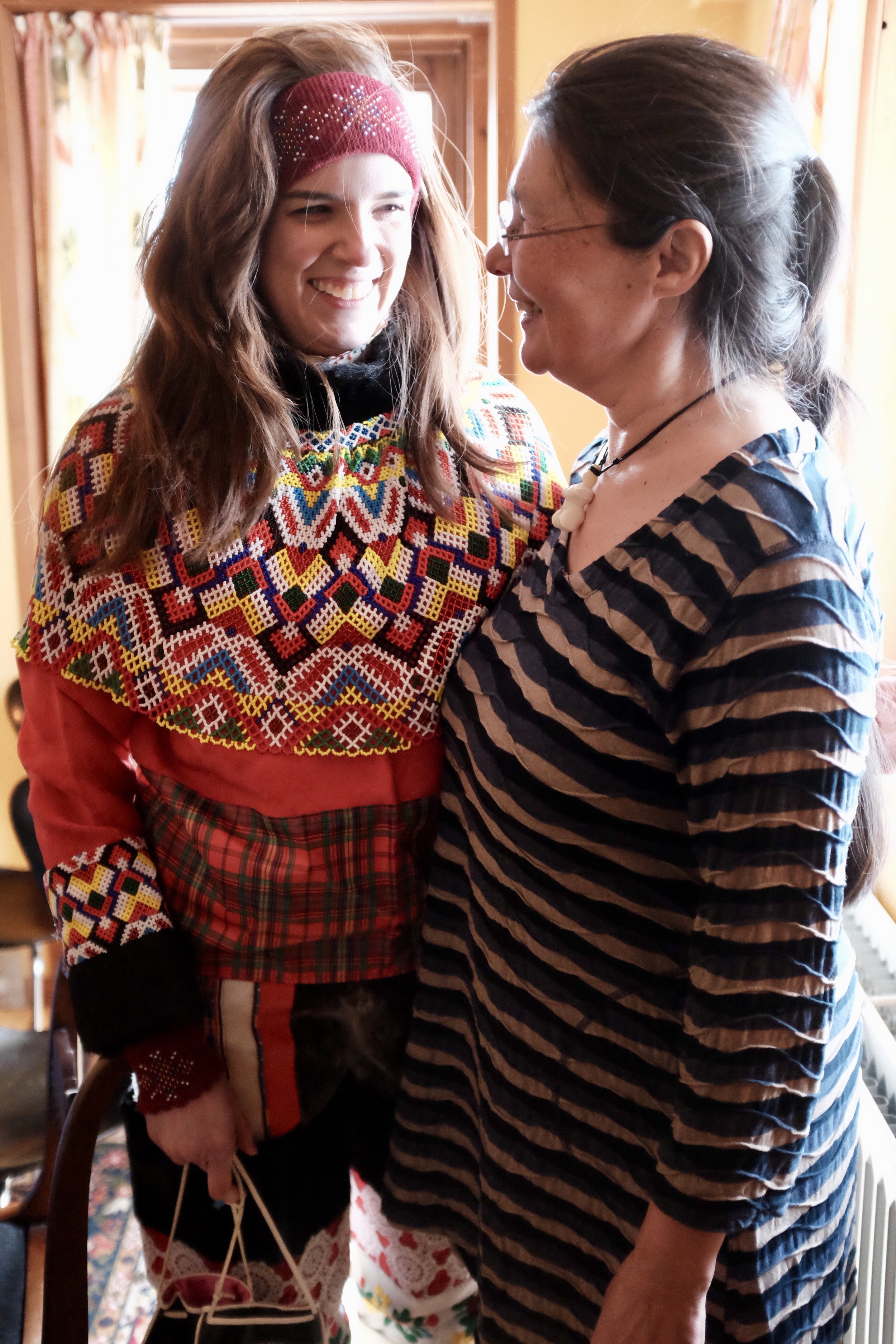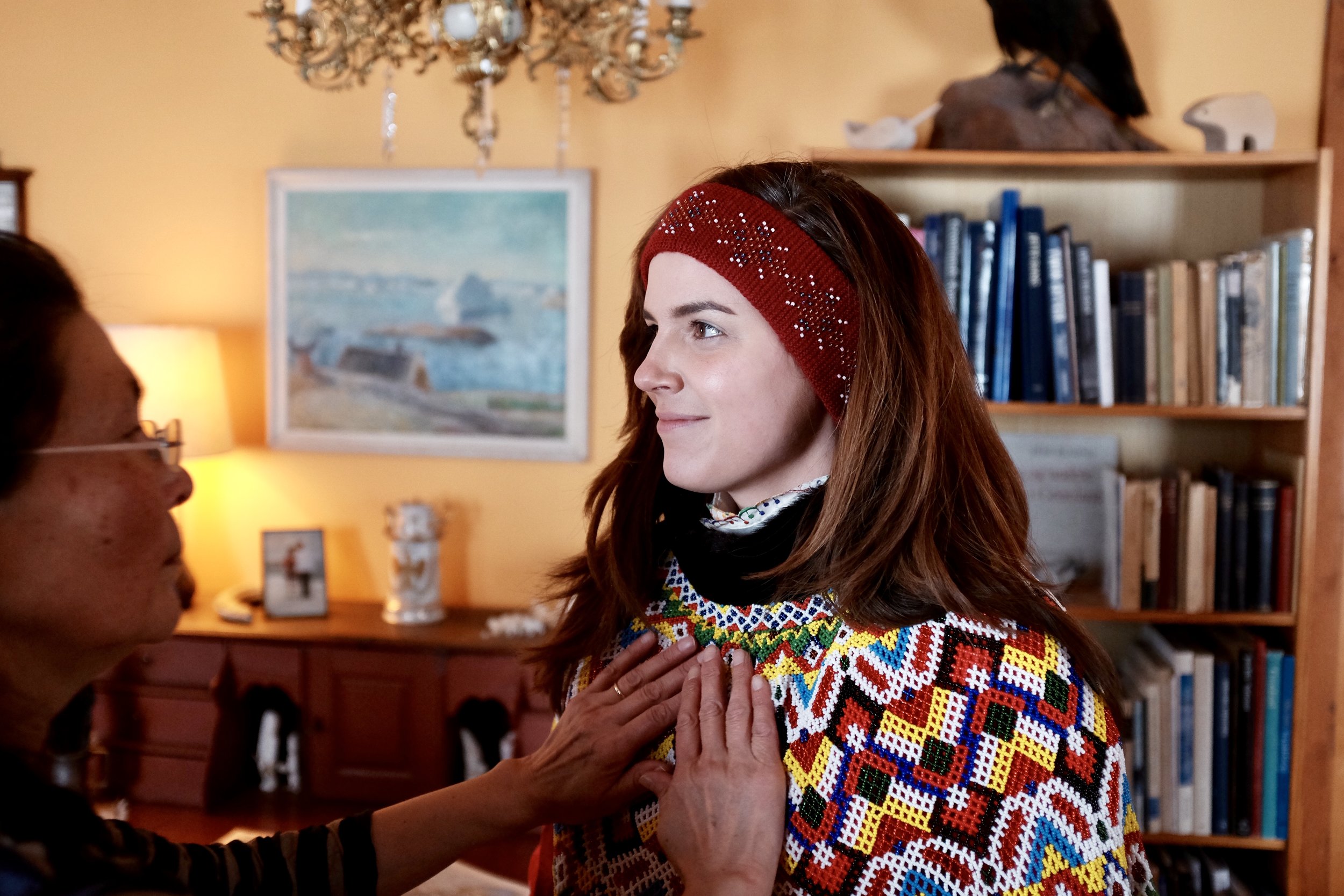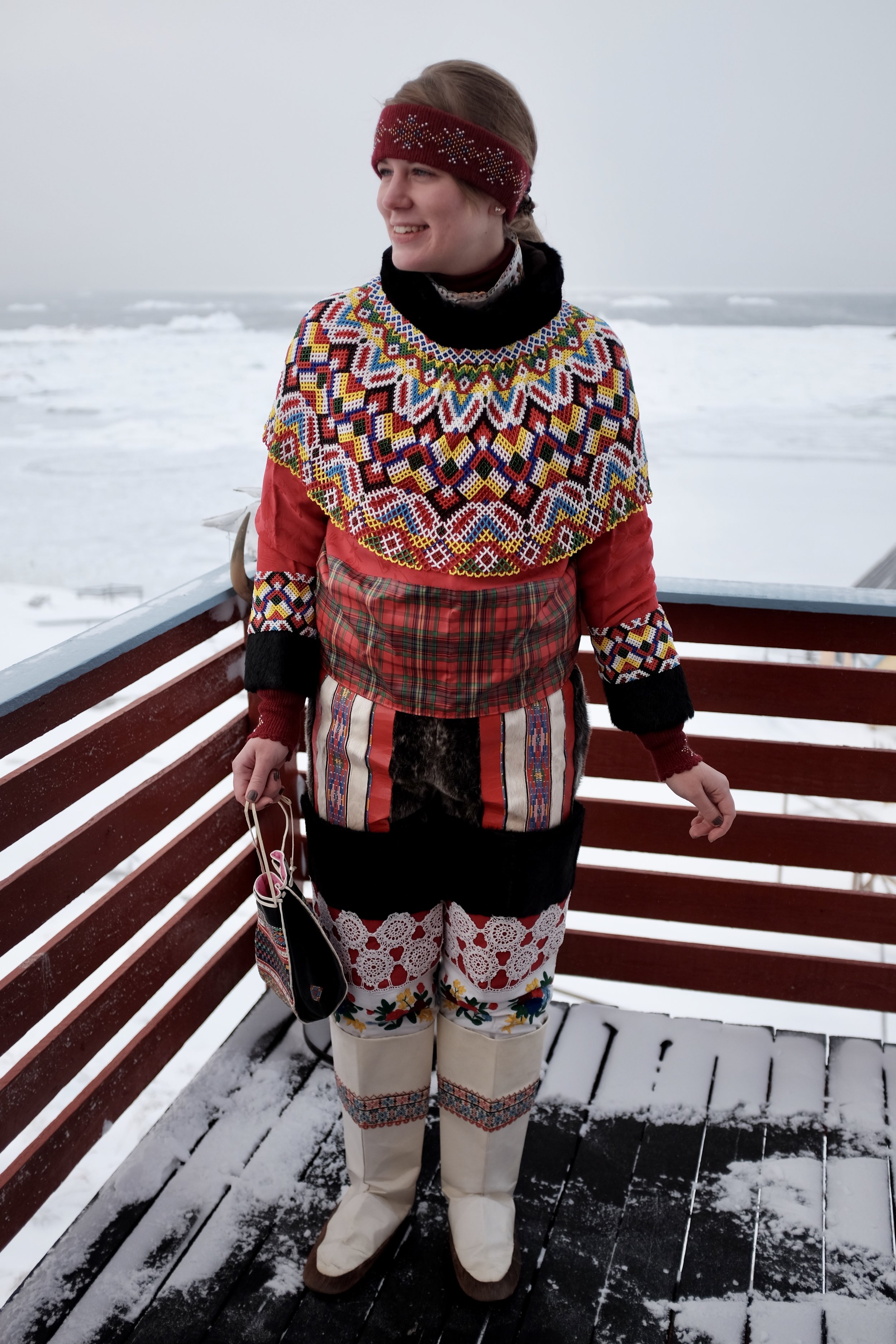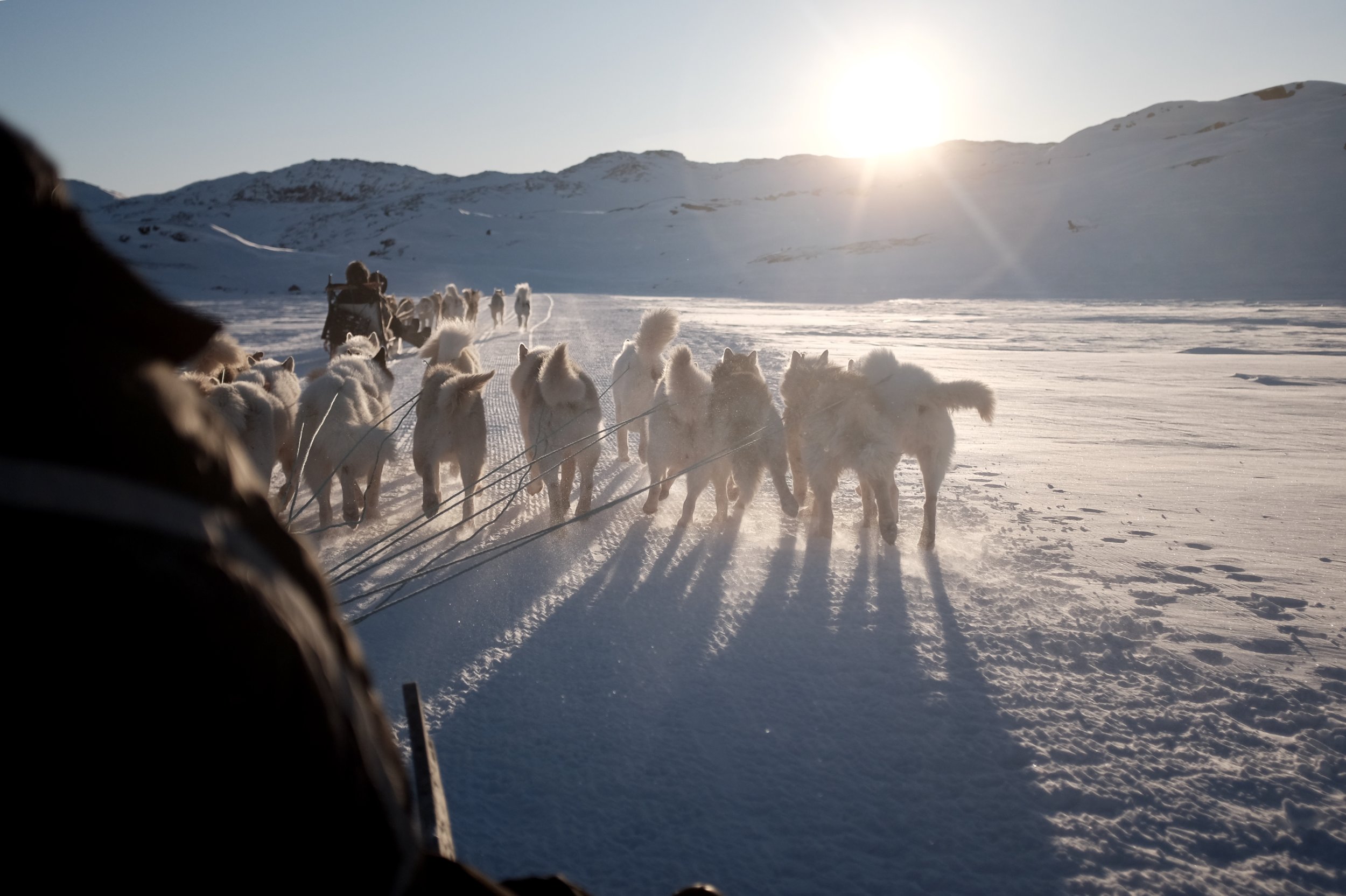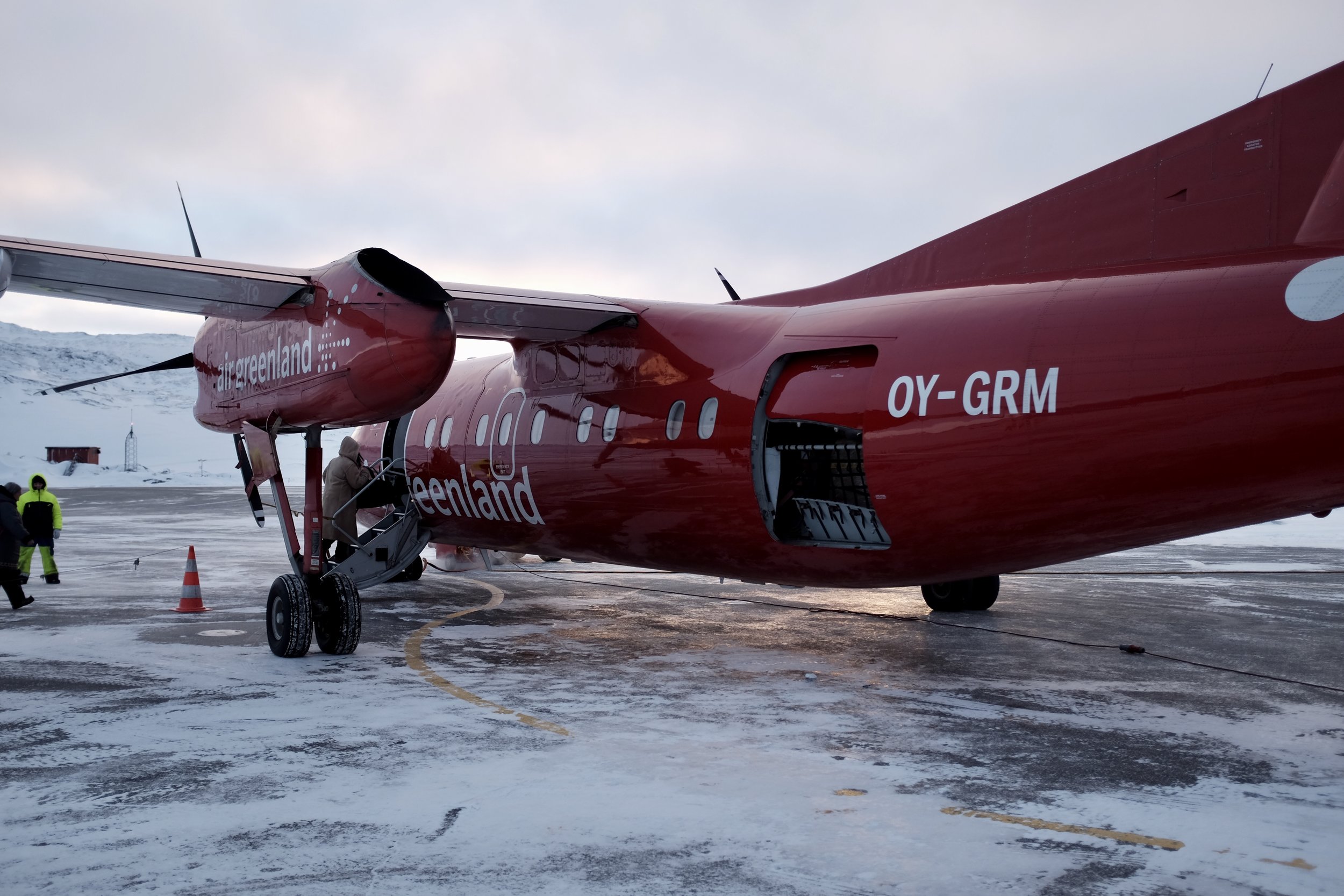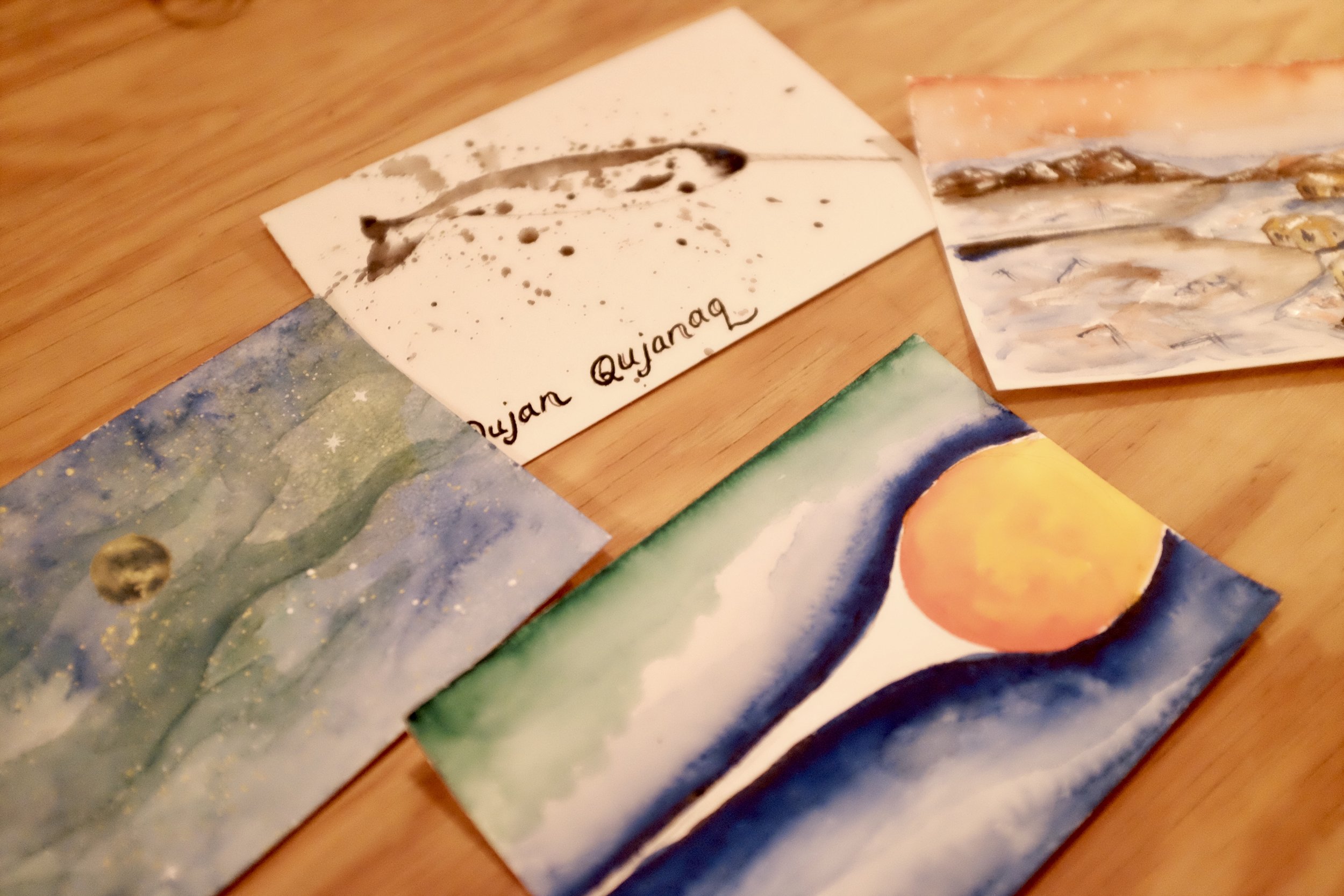Greenland.
"This is real life." — words we needed to repeat to ourselves over and over again, as Greenlandic husky puppies roamed the streets, eager for snuggles. It was so cold our snot froze 30 seconds after going outside, the sounds of fluffy snow crunching under our feet became emblematic of eminent triggers of awe and wonder, and glaciers perched nonchalantly at the end of street corners as if to say "yeah? So what?"
The intimacy and presence of nature is unquestionable in these lands. The landscape is changed by the weather daily. We woke up one morning to Ilulissat’s bay entirely frozen over, spontaneous partnerships of boats coming together to "pave a path" so that the fisherman could do their jobs.
The local people haven't dared diverge from a life of profound human connection: making eye contact feels like diving deep into their soul, wrapped in bright colors and sealskin, to be told a story of folklore a thousand years old.
This is a place of ritual, from building igloos in the pattern of a spiral — just like the path, each new block no less important than the one that comes after it — to the 30 minutes it takes to put five layers of wool, fleece, and goretex on, just to go outside. To hear ourselves breathe, to watch as icicles form on our eyelashes and on the peach fuzz under our noses, to move deliberately, to understand what it means to freeze, and subsequently thaw, our fingertips, and our feelings.
To live is to feel. To feel is to be alive. To be alive is to be connected to nature.




















